Leeches may help find cryptic, supposedly extinct, and even new species
The tiger leech (Haemadipsa picta) in Borneo waits on land for passing prey, but new research shows its appetite for blood may be key for conservation efforts. Photo by: Rhett A. Butler.
The use of remote camera traps, which photograph animals as they pass, has revolutionized research on endangered and cryptic species. The tool has even allowed scientists to document animals new to science or feared extinct. But as important as camera traps have become, they are still prohibitively expensive for many conservationists and require many grueling hours in remote forests. A new paper in Current Biology, however, announces an incredibly innovative and cheaper way of recording rare mammals: seek out the leeches that feed on them. The research found that the presence of mammals, at least, can be determined by testing the victim’s blood for DNA stored in the leech.
The story begins at the University of Copenhagen where geneticist Tom Gilbert and his team decided to test how long mammal blood stays in a satiated leech. They fed goat’s blood to aquatic leeches and then extracted the blood at various time intervals to see if they could identify goat DNA in the blood sample. Surprisingly, goat DNA could still be found in the blood for as long as the experiment lasted: four months. Although Gilbert told mongabay.com that past research suggested the blood may survive a year-and-a-half.
“[The leeches] gorge and fill their crop, which is like a storage tank. In the crop there is very reduced microbial activity/enzymatic activity; it really seems designed as a natural preservative. […] It’s the crop that does the preserving magic, and this evolved as a strategy to allow feeding once then resting, growing, reproducing,” Gilbert explains.
Next, Gilbert and his team decided to test the method in the field. But where to start? Vietnam’s Annamite Mountains are home to an astounding number of rare and endangered mammals, including several that were only discovered in the 1990s. The most important of these was the saola (Pseudoryx nghetinhensis), which has been described as among the most astounding new species of the last century (it was first announced in 1992). A forest bovine that resembles an African antelope, the soala and its habitat has captured the attention of conservationists worldwide.
So Gilbert and his team got their hands on 25 leeches from the Annamite Mountains and tested their cached blood for mammal DNA.
The results
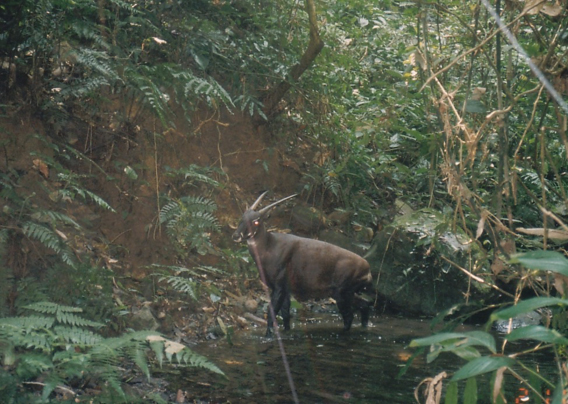
One of the only photos of a saola in the wild. Photo taken by cameratrap in 1999. Photo courtesy of William Robichaud .
They found mammal DNA in 21 of the 25 leeches (84 percent), including a number of surprises. Five of the leeches contained pig DNA and two of the leeches contained cow DNA, but the other 14 were more interesting. Three had drank the blood of the mainland serow (Capricornis maritimus), a strange-looking goat-like animal that is listed as Near Threatened by the IUCN Red List. Six had sipped off the Chinese ferret-badger (Melogale moschata), an important find as this species is impossible to tell from a similar species of ferret-badger by sight or camera trap. Four leeches had sucked on the Annamite stripped rabbit (Nesolagus timminsi), a species that was only discovered in the late 1990s. So little is known about the beautifully-marked animal that it is listed as Data Deficient by the IUCN Red List. Finally one leech had lunched off a dwarf deer: the Truong Son muntjac (Muntiacus truongsonensis), one of the smallest of the already-tiny muntjacs. The Truong Son muntjac was only discovered by science in 1998, and like the Annamite striped rabbit is considered Data Deficient.
Unfortunately, none of the leeches held the DNA of a saola. But this, perhaps, isn’t surprising given the animal’s rarity and the small number of leeches tested. What the study did do is prove that blood from leeches can determine the presence of little-known cryptic species like the Annamite striped rabbit and the Truong Son muntjac.
The study’s findings has piqued the interest of conservationists working to save the soala, who have had little-to-no information on this species since its discovery in 1992: just one camera trap photo and a couple individuals captured by locals. In fact, the saola is so elusive, scientists went from 2000 to 2009 with no evidence that the species still existed until one was brought into a village two years ago where it quickly expired.
William Robichaud, the coordinator of the Saola Working Group, told mongabay.com that the leech study was “promising.”
“In theory, from one block of forest we could collect a thousand leeches, blend them and do one test to see if any saola blood and DNA was present. So it could be a highly efficient, cost-effective method to detect rare species,” he said, adding that finding a saola will be “something of a needle in a haystack” given the amount of animals that leeches feed on and the saola’s renowned scarcity.
And even if they get a positive test, Robichaud says it still leaves the conservationists wondering when the leech fed on the saola.
“A week ago? A month ago? A year ago? One of the next avenues of research for the Copenhagen team will be to get a handle on this.”
Despite such limitations, the method could prove to be the best and cheapest way to track the saola.
The implications
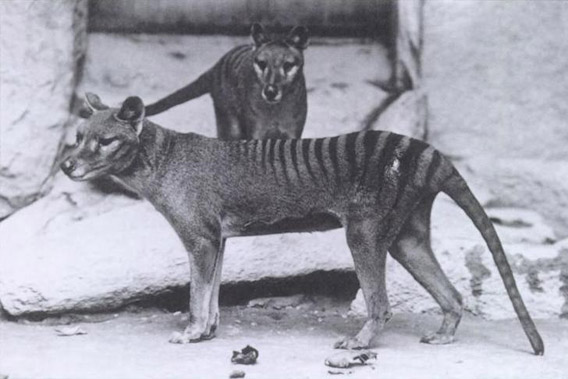
Two Tasmanian tigers in Washington D.C. zoo. The last of the species is believed to have died in 1936, but sightings persist to the present. Photo by: E.J. Keller.
As important as this research may be for the saola and the other spectacular wildlife of the little-explored Annamite Mountains, it could prove just as revolutionary in habitats worldwide. So long as there are leeches that feed on the blood of animals, Gilbert says the method could prove invaluable. It’s possible leeches could be used to see if well-known endangered species, like tigers or rhinos, still roam various little-explored forests in Asia.
Leeches could even help cryptozoologists (literally those who study “hidden animals”) explore the presence of long-believed extinct animals. For example, most scientists believe the Tasmanian tiger (Thylacinus cynocephalus) has been extinct for decades, but unconfirmed sightings of this large marsupial carnivore persist in Tasmania, Australia, and even on New Guinea. Could leeches, which are found both on land and in water in Tasmania, show whether the Tasmanian tiger still roams the wild?
“Absolutely,” Gilbert says, “if [leeches] like to eat Tasmanian tiger. It’s something we hope to explore. The nice thing of the method is we can look at a generic DNA marker [so] we don’t have to pick a species up front. We can just say ‘let’s see what mammals are there.’ The point being, we could go to Tasmania, collect leeches, look at the total mammals in the area, and maybe hit lucky.”
And that’s not it. Gilbert says DNA found in the leeches could point researchers to new species as well. He explains: “If the leeches eat the animal, and we sequence it, we will find two results. Either a sequence that is known, or an unknown sequence. With mammals, if it is the latter, it will probably be similar enough to something else to give a hint (e.g. some kind of cat, some kind of rabbit). What one then has to do is look at two options. Number one: it’s a discovered species that hasn’t yet been sequenced – to check this we find candidate animals, sequence them, and see if the sequence matches. Or number two: it’s an as yet undiscovered species. Here we can only give some rough description […] we can say, ‘hey we think there is some kind of unknown cat in the area.’ We can’t of course be more specific, but that’s the point of other methods.”
So, not only could the leech help determine whether a species is gone for good, but it might be able to tell us where to look for a new species, and what to look for (cryptozoologists interested in animals based on local sightings and folklore, such as the Sasquatch of North America or the orang pendek of Sumatra, might want to take note).
The leeches tested in the Annamite Mountains were terrestrial leeches, but Gilbert says that aquatic leeches could also be tested for other animals, including fish, reptiles, and amphibians. Of course, the method in every habitat is limited to those species that leeches feed on, but it also appears to be limited to the leech’s last meal. Gilbert says that DNA from past meals are quickly overwhelmed by new blood, making DNA from old meals, or multiple ones, improbable to detect.
But leeches are not the only animals that suck blood. Researchers are already working with similar DNA-extracting methods with mosquitoes, and ticks may be next. But Gilbert says the advantage of leeches is that they retain blood for so long. Still each bloodsucker may target its own set of victims.
“We don’t now if the leeches have dinner biases, it may be that such biases need to be considered,” Gilbert says. In the future, such work may be able to tell researchers even more than whether or not an animal is in the area, it may also be used to answer the important question of how many of these animals are left. Gilbert explains that scientists are currently exploring what blood DNA from leeches may say about abundance.
As for the saola, Robichaud says his group is moving forward on trying to track the elusive animal byway of leeches, calling the work “very exciting.” However he adds that the documenting the species, which is listed as Critically Endangered by the IUCN Red List, will still depend on multiple strategies, from camera traps to possibly dogs.
“Until the efficacy of the leech method is demonstrated, and its strengths and weaknesses understood, we’ll keep pursuing all tools we have available,” Robichaud says.
Such strengths and weaknesses will become clearer as more research is conducted.
“We are kicking off other studies in various parts of Southeast Asia and Madagascar,” says Gilbert. “We hope others will too once they realize its really quite easy and cheap!”
It may not be long before the leech becomes key in saving its victims from extinction.
CITATION: Ida Boerholm Schnell, Philip Francis Thomsen, Nicholas Wilkinson, Morten Rasmussen, Lars R.D. Jensen, Eske Willerslev, Mads F. Bertelsen,
and M. Thomas P. Gilbert. Screening mammal biodiversity using DNA from leeches. Current Biology. 22, R262–R263 (2012).

Pu Mat National Park in the Annamite Range in Vietnam. Photo by: Rolf Müller.
The Annamite Mountains of Vietnam which also extend into Laos.
Related articles
Beyond Bigfoot: the science of cryptozoology
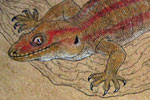
(03/26/2012) Anyone who doubts cryptozoology, which in Greek means the “study of hidden animals,” should remember the many lessons of the past 110 years: the mountain gorilla (discovered in 1902), the colossal squid (discovered in 1925, but a full specimen not caught until 1981), and the saola (discovered in 1992) to name a few. Every year, almost 20,000 new species are described by the world’s scientists, and a new book by Dr. Karl Shuker, The Encycloapedia of New and Rediscovered Animals, highlights some of the most incredible and notable new animals uncovered during the past century.
Javan officials employ camera traps to find extinct tiger
(03/13/2012) Although officially declared extinct in 2003, some people believe the Javan tiger (panthera tigris sondaica) is still alive in the island’s Meru Betiri National Park. To prove the big cat has not vanished for good, wildlife officials have installed five camera traps in the park, reports Antara News.
The camera trap revolution: how a simple device is shaping research and conservation worldwide
.150.jpg)
(02/14/2012) I must confess to a recent addiction: camera trap photos. When the Smithsonian released 202,000 camera trap photos to the public online, I couldn’t help but spend hours transfixed by the private world of animals. There was the golden snub-monkey (Rhinopithecus roxellana), with its unmistakably blue face staring straight at you, captured on a trail in the mountains of China. Or a southern tamandua (Tamandua tetradactyla), a tree anteater that resembles a living Muppet, poking its nose in the leaf litter as sunlight plays on its head in the Peruvian Amazon. Or the dim body of a spotted hyena (Crocuta crocuta) led by jewel-like eyes in the Tanzanian night. Or the less exotic red fox (Vulpes vulpes) which admittedly appears much more exotic when shot in China in the midst of a snowstorm. Even the giant panda (Ailuropoda melanoleuca), an animal I too often connect with cartoons and stuffed animals, looks wholly real and wild when captured by camera trap: no longer a symbol or even a pudgy bear at the zoo, but a true animal with its own inner, mysterious life.
The saola: rushing to save the most ‘spectacular zoological discovery’ of the 20th Century
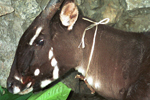
(04/04/2011) The saola (Pseudoryx nghetinhensis) may be the most enigmatic, beautiful, and endangered big mammal in the world—that no one has ever heard of. The shy ungulate looks like an African antelope—perhaps inhabiting the wide deserts of the Sahara—but instead it lives in the dense jungles of Vietnam and Laos, and is more related to wild cattle than Africa’s antelopes. The saola is so unusual that is has been given its own genus: Pseudoryx, due to its superficial similarities to Africa’s oryx. In the company of humans this quiet forest dweller acts calm and tame, but has yet to survive captivity long. Yet strangest of all, the 200 pound (90 kilogram) animal remained wholly unknown to science until 1992.
Time to give up on Tasmanian tiger, says DNA expert
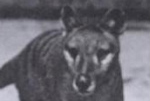
(03/02/2009) Money and energy spent on finding the Tasmanian tiger should be used for other conservation purposes, according to Dr. Jeremy Austin from the University of Adelaide’s Centre for Ancient DNA. The Tasmanian tiger, or Thylacine, has captured the imagination of cryptozoologists ever since the last known individual died in the 1936 in the Hobart Zoo, which closed the next year. There have been several unreported sightings throughout the island since the 1930s, including inconclusive photos taken by German tourists.